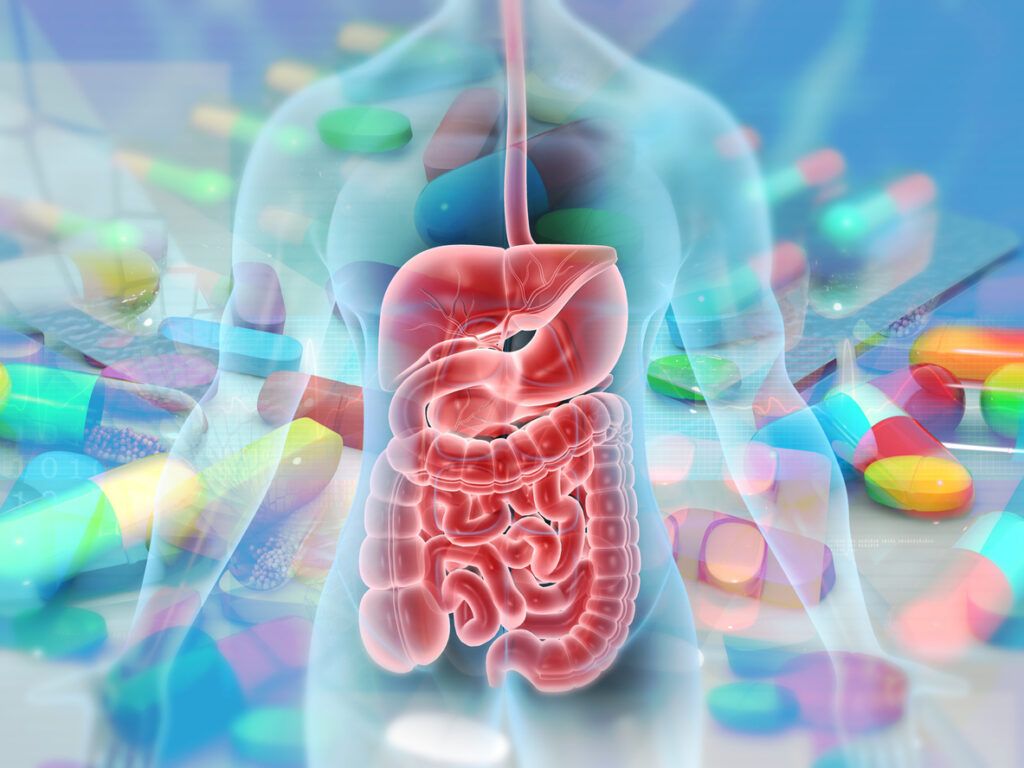Can Antibiotics Kill Me?
Yes, antibiotics kill millions of people every year. They have also saved countless lives. Let’s discuss this issue.
Most antibiotic-related deaths go unreported. This is because the cause of death on record is often the issue caused by the antibiotic and not the antibiotic itself.
Colitis
Let’s take colitis for example. Antibiotics, usually Amoxicillin, will kill off the good bacteria you need. When you take an oral medication it goes everywhere not just what you are taking it for. So you may be taking it for a foot infection but it kills off bacteria in your intestines. This may allow a bad bacteria called Clostridium difficile (C. diff) to overgrow. C. diff causes your intestines to start to degrade and become severely inflamed. There are over 200,000 cases a year of C. diff colitis in the United States. Most of these are caused by antibiotics. About 13,000 people die from this infection every year in the US alone. Once your intestines shut down you die.
Patients who survive may have had large amounts of their intestines removed and wear a colostomy bag. A colostomy bag is a bag full of poop that hangs on the outside of their abdomen for the rest of their lives. This preventable disease is what we hear about, not the cause—the antibiotic you thought was harmless.


As a side note, these patients have sometimes shown up in my office still requesting antibiotics, antibiotics they don’t need, antibiotics that almost killed them and antibiotics that left them with lifelong serious complications. We have been trained to believe that antibiotics are a harmless cure for everything.
What Are Good Bacteria?
There are 3 main types of microbes that live on our bodies: viruses, bacteria and fungi. There are about 39 TRILLION of these microbes crawling on you right now. That means they outnumber our own cells 10 to 1! We need these organisms on our skin. They work as a barrier and protect us. They also keep each other in check—hence getting fungal infections in places such as our pelvic area, mouth and skin after taking antibiotics because your bacteria are decreased.
Antibiotics do not just kill the bad bacteria, they kill the good bacteria all over our body.
How Do Antibiotics Cause Harm?
There are multiple ways antibiotics lead to lifelong health issues and death. Let’s list some of these here that we will discuss:
- Antimicrobial-resistant infections
- Increase your risk of cancer
- Antibiotic side effects
- Interactions with other medications
Antimicrobial Resistant Infections
1.2 million people are confirmed to have died due to antibiotic-resistant infections (AMR) in 2019 alone. This is just what is confirmed. Understand that the real numbers are most likely much higher. The estimate worldwide is about 5 million deaths yearly due to AMR.
The more antibiotics are used, the more the bacteria learn to mutate, or change, to become resistant to the medicines we have for them. If we only use them when we really need them it decreases the chances that bacteria have to mutate a resistance to antibiotics.
In 204 countries worldwide, AMR is now the leading cause of death. 1 in 5 of these deaths was in children younger than 5 years old. Pneumonia was the number one infection in 1/3 of the deaths.
The most common bugs/bacteria that were involved in almost 1 million of the confirmed deaths were Escherichia coli (E. coli), Staph aureus, Klebsiella pneumoniae, Strep pneumoniae, Pseudomonas aeruginosa, and Actinobacteria baumannii.
What does all of this mean?
So let’s think about this. Do you recognize any of the names on that list? E. coli, a common cause of urinary tract infections, is listed as one of the top resistant bacteria. Urinary tract infections are also a top cause of death in the elderly.
S. aureus is a common cause of acne and other infections, in addition to the skin.
In short, some of these bacteria listed cause what many consider “simple” infections, but these infections can kill you and have been for decades. The incidence of those deaths is dramatically going up.
Due to this, harsher antibiotics have to be used to treat these common infections, or worse, the patient dies from the harsher antibiotic’s side effects. The patient may also die if the bug is resistant to everything available.
Increased Risk Of Cancer Due To Antibiotic Use
You might be hearing about more and more young people dying due to colon cancer. This isn’t a coincidence. Multiple studies have shown that people with increased use of antibiotics, especially in childhood, have an increased risk of gastrointestinal cancers, not just colon cancer. Children less than 2 years old are more prone to this because their intestines are colonizing the organisms they will need throughout life.
This effect happens to infants whether they are around others taking antibiotics or taking the antibiotic themselves. The person taking the antibiotics exposes the bad bacteria to the infant simply by handling and being around them. The infant may now colonize their colon with the bad bacteria.
Additionally, studies have shown that just being exposed to someone who is currently taking antibiotics increases your risk of complications of antibiotics, such as C. diff colitis-and you didn’t even take an antibiotic!

What about a Fetus?
This is also true for the fetus inside a mother’s womb when the mom takes antibiotics. Studies show that the number one prescribed medication to pregnant patients was antibiotics.
A study in British Columbia, Canada showed an increased overall risk of cancers in children of mothers who took antibiotics during pregnancy, mostly in the first trimester. Burkitt lymphoma, leukemias, non-central nervous system tumors, and rhabdomyosarcoma were some of the cancers investigated.
Antibiotic Side Effects
There are many classes and types of antibiotics. They all have side effects. Some are worse than others with serious FDA warnings associated with them. As we have already talked about, your “simple” Amoxicillin can and does cause death.
About 1000 deaths per year in the US are due to an allergic reaction to penicillins alone.
1 in 85,000 patients develops an arrhythmia when they take a Macrolide antibiotic. An arrhythmia is a serious heart condition. The famous Zpak is a Macrolide. It is prudent to note that there were 52 million Zpak prescriptions in the US in 2012. This means over 600 people in the US developed a deadly cardiac arrhythmia to an antibiotic they most likely didn’t need just in 2012. Many of these deaths were in children.
Patients taking Zpak think it does help them for 2 reasons:
One: It has an anti-inflammatory effect that simply makes us feel better. This has nothing to do with healing you and can be done by taking Motrin, Flonase or a nasal rinse.
Two: You are getting better anyway as is the course, having nothing to do with the antibiotic. Most infections heal up in 5 days, though they can go on for 3 weeks.
FDA’s Black Box Warning
Many of these antibiotics have the highest level of FDA warning due to their serious complications and death rates. It is called a Black Box Warning. These warnings are well known for many years, yet the prescriptions keep being written in masse. Zpak, Levaquin and Cipro all have the Black Box Warning.
Examples of antibiotics and their serious side effects that lead to lifelong complications or death with the percentage of patients affected:
Penicillins-such as Amoxicillin and Augmentin
Allergic reactions up to 10%
Colitis up to 10%
Kidney failure 0.01%
Liver failure 0.01%
Severe bleeding disorder. 0.01%
Convulsions/seizures. 0.01%
Yeast infections 10%
Macrolides-such as Zpak/azithromycin, Biaxin, and Erythromycin
Heart arrhythmia/cardiac 0.1-1%
Allergic reaction 1-10%
Loss of hearing 1-10%
Kidney failure 0.1-1%
Candidiasis 0.1-1%
Visual impairment 1-10%
Florquinilones-such as Levaquin, Cipro and Avelox
Heart arrhythmia/cardiac 0.1-10%
Allergic reaction 0.1-10%
Tendon ruptures up to 2%
Seizures & Neurologic 0.1-1%
Colitis, Pancreatitis. 0.1-1%
Candidiasis 1-10%
Shortness of breath 1-10%
Kidney failure 0.1-1%
Liver disease 0.1-10%
Bactrim which is a sulfa drug
Allergic reaction common
Anemia amount not reported
Colitis amount not reported
Intestinal bleeding amount not reported
Liver failure amount not reported
Increased potassium 10% or more
Candidiasis 1-10%
Candidiasis
This antibiotic death issue is not just due to bacteria. Notice in the above list that candidiasis/yeast infections are repeatedly listed and common. Taking antibiotics is causing increased death from yeast infections. Yes, this includes vaginal yeast infections. Something you probably cannot imagine.
The fungus that causes these infections is usually Candida. Candida’s resistance to the medications that we use for it has increased to the point of there being no treatment. Let me sum this up: a vaginal yeast infection is killing people.
This is due to 2 significant factors:
One: The yeast infection itself is caused by the overuse of unneeded antibiotics. They kill the good bacteria and allow the yeast to overgrow.
Two: The candida has now also become resistant to our current treatments.
Candida auris is one of the Candida culprits. Candida has been found in urine, blood and lungs. It can cause skin, ear, systemic, urinary and respiratory infections. 7% of C. auris are resistant to Diflucan, a common medication used to treat yeast infections. C. auris causes death in 30-60% of those infected in their bloodstream.
Candida albicans is another well-known culprit. It is the common cause of vaginal yeast infections. It lives on many parts of our body. C. albicans is not a problem unless it begins to overgrow, such as after we take antibiotics. Once it becomes systemic —in the bloodstream—it has a high death rate that has been increasing for the past 30 years.
Antibiotic Interactions With Other Medications
Antibiotics, just like any other medication, can interact with foods and medicines that you take. Some antibiotics are known to interact with birth control rendering it not as effective. Other very common antibiotics can cause serious diseases such as liver, kidney, bleeding and cardiac disorders when mixed with some also very common medications. Examples of these medications are arthritis, cholesterol, gout, blood clotting, high blood pressure and antidepressant medications. The list of interactions is quite extensive. It is prudent to disclose all of your medicines to your doctor prior to taking an antibiotic.
Increased Rates Of Inflammatory Bowel Disease
People who take antibiotics have an increased rate of inflammatory bowel disease (IBD). This happens in children and adults. IBD is a chronic disease of the intestinal tract that can lead to cancer and death. Crohn’s disease and Ulcerative Colitis are two common IBDs. A study in 2020 by Harvard Medical School and Karolinska Institute in Sweden found the rates of IBD increased after just 3 prescriptions of antibiotics. Many of us have taken much more than 3 antibiotic courses in our lives. The incidence of IBD increases with more antibiotic scripts taken. Taking probiotics when you take antibiotics has not been shown to alleviate the complications of antibiotics. There have been many conflicting studies on probiotic usage.
So why do we prescribe antibiotics if they are so bad?
Antibiotics are not bad. When used appropriately, they are an important part of healthcare. Antibiotics were developed in the 1920s and became more widely used in the 1940s. After the 1940s, life expectancy increased. This was due in large part to antibiotics. Before antibiotics, people would die from minor bacterial infections such as strep. Surgeries were also more deadly due to infections before antibiotics.
These are some of the infections that antibiotics can treat:
- Urinary and Kidney infections that are not fungal
- Certain types of gastrointestinal ulcers
- Dental abscesses
- Strep Throat
- Bacterial pneumonia but not viral or fungal pneumonias—in fact it will make them worse
- Skin infections that are not fungal
- Bacterial brain infections such as bacterial meningitis. There are other causes of meningitis such as amoeba, viral and fungal that antibiotics may make worse.
These are some examples of infections that antibiotics CANNOT treat and may make worse:
- Colds, flu, COVID, sinus issues and most ear infections. Most upper respiratory infections including sinuses, ears, and throat are viral and not helped by antibiotics.
- Fungal infections such as jock itch, athlete’s foot, vaginal yeast infection, and seborrheic dermatitis
- Mononucleosis—in fact antibiotics cause increased complications for mono patients including a rash
- Pinworms or other worm infestations
- Viral infections such as colds, chicken pox, and many childhood rashes and diseases
Let’s talk about sinus and upper respiratory infections
Symptoms such as runny nose, sinus pressure, sore throat, cough and congestion are symptoms of the common cold, or upper respiratory infection (URI). URIs, which include sinus and ear infections, are almost 99% of the time viral or allergic. Antibiotics only work on bacterial infections. They do not help viral infections or allergies.
An infection does not equate to bacteria. Remember there are multiple types of bugs. Bacteria are not the most common ones to infect us, viruses are. Studies on millions of patients have been done over decades repeatedly proving this. The grossest colored sputum is viral. The color of the sputum from our sinus cavities is typically due to what we are breathing in not what is infecting us. That color will change the longer you are sick simply because you are congested and what you are breathing in is collecting in that viral congestion.
1-2% of the time these viral infections can turn bacterial. Even if your cold turns bacterial it did not start bacterial. This change from a viral infection to a bacterial one can take weeks to happen.
You cannot take antibiotics to prevent this from happening.
Taking an antibiotic may increase your risk of bacterial infection by killing your good protective bacteria and allowing the bad to grow.
When you have a cold fluid can build up in your sinuses which are full of fluid created by the virus, not bacteria. Your cold may last 1-3 weeks. This is normal for a virus and doesn’t mean you have a bacterial infection.
Viruses spread much easier than bacteria and will infect an entire household. This isn’t true for bacterial infections. Strep is one of the few upper respiratory infections that is bacterial. It will not spread through a household as the common cold does. Among other reasons for this is strep likes to infect throats that are 3-16 years old. We simply do not have the receptors for them when we are born. We start to lose those receptors as we age. The point here is that bacteria tend to be particular about what and where they infect. Whereas the virus causing your cold is not so choosy!
Think about the pandemics. They are mostly caused by viruses, not bacteria. Again, that is because viruses will spread rapidly unlike bacteria. If your entire house is sick it is almost certainly a virus. While there are always exceptions, for the most part, we usually develop bacterial infections on our own, while we catch viral infections. An example of this is urinary tract infections (UTI), which are usually bacterial. Did you catch that UTI from your kid or coworker? No, but you will your cold because it is viral!
Conclusion:
The take on all of this is to take a step back before requesting or taking an antibiotic, especially if it has a Black Box Warning. Adhere to the following advice to stay healthier, live longer and get better quicker:
- Trust your doctor if they tell you you don’t need an antibiotic. They are trying to take care of you in the best way possible.
- Do not take an antibiotic not prescribed to you.
- If you do have to take an antibiotic always take it as directed and finish it out. You may be feeling better but the harder-to-kill stragglers are still there while the majority, easy-to-kill bacteria, are already gone. These are not the bugs you want to survive. So finish your antibiotics.
- Do not take old antibiotics.
- Make sure your doctor knows all of the medications you are taking.
- Do not take antibiotics for your viral upper respiratory infection.
- Take an antiviral medication if there is one available and recommended by your doctor. These may include the new COVID antiviral and flu medications. There is no antiviral for the common cold.
- Try supportive care for colds and other upper respiratory infections. This includes hydration, increased rest, vitamin C and nasal rinses.
Notations
An estimated 1.2 million people died worldwide in 2019 from AMR infections 20 January 2022, University of Oxford, UK website, accessed 30-8–2022
Candida auris 13 November 2019, CDC, US government website, accessed 30-8-2022
Candida albicans Antifungal Resistance and Tolerance in Bloodstream infections 8 February 2020, National Library of Medicine, NIH US government website, accessed 30-8-2022
Common Antibiotics Cause Arrhythmias Death and Everything Else 9 November 2015, Forbes Healthcare, Forbes website, accessed 30-8-022
Phototoxicity of Non-aminoglycoside Antibiotics 9 March 2021, Frontiers in Neurology website, accessed 31-8-2022
Medication Side Effects, Drugs.com website, accessed 21-8-2022
Maternal use of antibiotics and cancer incidence risk in offspring: A population‐based cohort study in Manitoba, Canada 19 August 2019, Pubmed Central, National Library of Medicine website, accessed 31-8-2022
These drugs don’t mix with antibiotics 25 March 2020, Infectious Disease, MDLinx website, accessed 31-8-2022
Greater antibiotic use increases risk of Inflammatory Bowel Disease 26 August 2020, Gastroenterology, US Pharmacist, accessed September 2022
